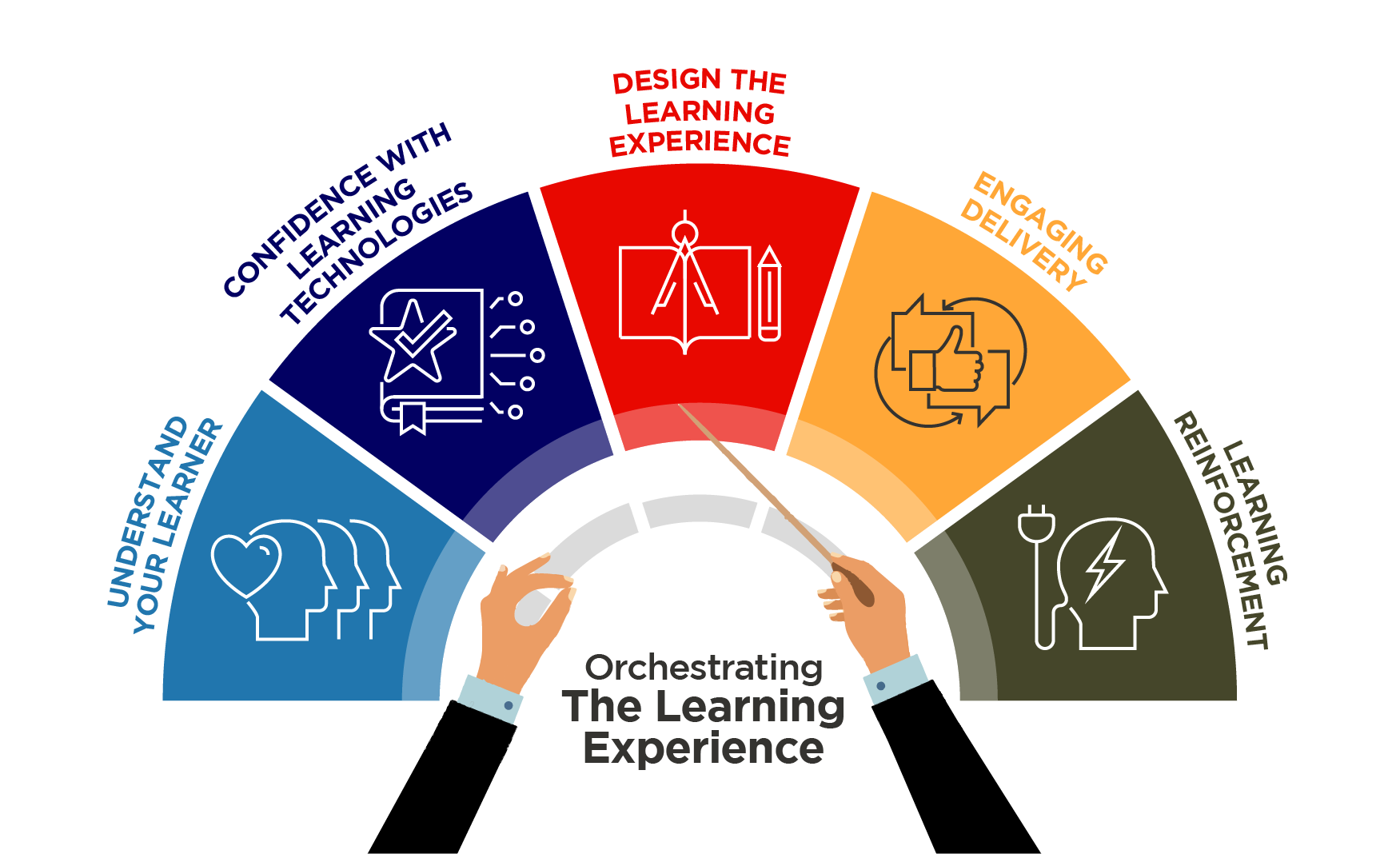
C 2 C Learning Experience model

ELEMENTS NEEDED TO ORCHESTRATE CHANGE
A Shift in Mindset
Orchestrating a successful student learning experience
ELEMENT 1
Understanding Learners
Learners have a world of choice
ELEMENT 2
Confidence with Learning Technologies
Understanding comfort levels of students
The digital world offers a wide array of learning technologies that can enhance the learner experience to achieve better learning outcomes. It is important for the learning design team to be familiar and comfortable with the technology options.
ELEMENT 3
Design
the Learner Experience
'Fit for Purpose' Learning Design
Engaging learner experiences are created when academic content is combined with the appropriate learning design as well as enabling technologies. The foundation of all high quality university learning and teaching is the academic content. Well designed university education - whether delivered digitally or via blended learning - must respect the integrity of this academic content – there is no compromise here. The learner experience must fulfill of the same learning outcomes but with an enhanced digitally enabled student learning experience.
ELEMENt 4
Engaging delivery
Student Engagement is crucial
The skills of engaging delivery in a digital setting can be learned - and the face-to-face approach may not translate. A major factor in the face-to-face learning approach is the presence of direct human-to-human engagement. The mere fact that there are two or more humans in the same physical space permits and enables that natural presence of of human engagement. Thus, in the move to digital and online learning, the loss of this direct human engaging, which naturally leads to student engagement with the academic materials, need to be substituted with a new approach – and a digitally enabled approach – to student engagement. This is one reasons why taking learning design that is used in face-to-face learning mode and ‘putting it online’ will likely result in a poor student experience. The learning design in face-to-face mode is not directly ‘fit for purpose’ in the online learning world.
ELEMENt 5
Learning Reinforcement
Supporting ongoing understanding
Contact Us
Make contact with us and one of the team with be in touch within one business day.
10 - 12 Church Street, Parkville, Victoria, AUSTRALIA 3052